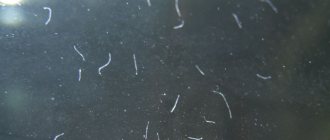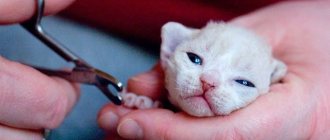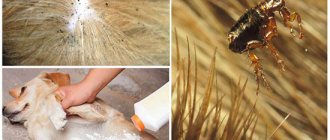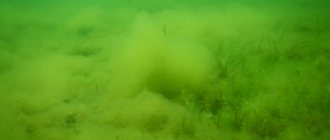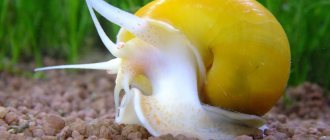If you encounter a black beard in your aquarium, then there is nothing very scary about it, but you will have to tinker with getting rid of it. What is it? Its scientific name is compsopogon coeruleus. Often a black beard is confused with a Vietnamese beard (red beard). But according to taxonomy, Vietnamese and black beard algae belong to the same department. Black beard in an aquarium is small black hairs on plants or any surface (from filter to ground), 0.5-5 cm long, representing a weave of black and green threads. It does not pose any danger to fish. Slow-growing plants suffer first, because their leaves are closed from sunlight, the plant tissue itself is destroyed, which is why the plants actually suffocate.
Global solution to the problem - ways to combat it
Control the amount of feed you pour in.
There is no need to pour more than they can eat within 5 minutes. To get positive results in the fight against black beard, it is advised to plant fast-growing plants that absorb nutrients well, and to stimulate this process, it is also advisable to trim them, since young shoots cope with this task much faster. But before planting plants, they must be disinfected; by the way, scrapers, nets and other devices that you use in the aquarium should also be subject to this procedure.
For good plant development, they must be provided with fertilizers and an optimal level of carbon dioxide. Using a special container or a regular jar of yeast, it is necessary to remove excess oxygen, which hinders development.
Fertilizers are best purchased in the form of ready-made mixtures; they are rich in various microelements and do not have phosphates and nitrates. Still, we should not forget that a small level of nitrates must be present in the water, otherwise the plants will begin to die without consuming phosphates.
You can notice a lack of nitrates by observing plants; their leaves will begin to turn yellow and die. The nitrate content in the water can drop to zero if there are too few fish and too many plants in the aquarium. On average, the norm of nitrates in water is 2-5 milligrams per liter of water.
After some time, you can see a positive result in the destruction of black beard. A clear sign will be a change in the color of the algae; it will begin to gradually lighten and then fall off from the affected areas.
Folk ways to eliminate black beard
So, according to the authors, there are various effective ways to combat black beard.
Method one
What upsets the aquarist most of all is the appearance of algae in the aquarium - purple algae, or compsopogon, which is popularly called “blackbeard”. The fight against these algae is many times more difficult than with all the others. It is useless to peel off the tassels of a black beard or poison them with chemicals. They persistently appear here and there.
The most reliable, but not very fast way to get rid of purple spots is a painstaking and constant change of water and cleaning the soil. Every other day, 10-15% of the water in the aquarium is replaced with superficial cleaning of the soil. This must be done constantly, without allowing breaks, then after 1.5-2 months the “beard” will practically fall off. Its small islands, occasionally found on stones and old plant leaves, do not spoil the overall picture.
Previously proposed control recipes based on a shift in pH value require careful monitoring of the state of the environment. Otherwise, the damage caused to fish and plants may be irreparable. It is also recommended to dip the plant in a dilute solution of acetic acid for a few seconds, and then rinse thoroughly. Such a short stay in an environment that is aggressive for them will not harm the plants much, but in a few days the scarlet will fade and crumble.
Method two
The main method of combating “blackbeard” is mechanical cleaning of the affected areas with a stiff brush, however, if even a small spot remains, then another tuft of algae will definitely grow from it.
It is better not to create conditions for the proliferation of this algae (if it does end up in the aquarium) by regularly cleaning the aquarium and replacing old water with fresh water. You can avoid getting flip flops into your aquarium only by purchasing obviously clean aquarium plants at a pet market. If you notice a dark-colored hair on at least one leaf of the plant, then refuse to purchase it.
Method three
A black beard in an aquarium causes a lot of trouble and is very difficult to fight. If there is current in the aqua, minimize it, reduce daylight hours, increase the frequency of changes, and add fast-growing plants such as hornwort.
Ps - there is a drug for algae - Sidex, to be honest, I haven’t tried it, but people seem to praise it.)) Try to get SAE, they are good at eating your beard.
So gradually, over the course of three months, my filter acquired a black beard or flip-flop. Moreover, it grows where there is more light from the lamp. Many people write. that light does not affect the flip-flop, but my observations show that this is not the case.
Method four
Try to get Siamese epalceorhynchus; they write on the Internet and in books that they are very good at cleaning the aqua of all unnecessary algae. You can buy Sidex - it’s difficult and toxic! Do not turn off the filter. You can try to buy Killer (in the store), but it’s not a panacea.
A black beard is usually caused by an imbalance in the bank. So even if you restart the aqua, it’s not a fact that the beard won’t appear again. I’m trying to do this myself now, even restarting after 3 months didn’t help, this nasty thing appeared again. Now I want to make a mash generator for feeding plants. Although it seems that the killer eliminated the problem, there is an imbalance.
Method five
The most important thing is that you don’t have to buy anything; you can find everything you need in your own kitchen. This method is as follows. Remove the plants with affected leaves from the aquarium and immerse them in 3-7% vinegar and dilute them approximately half with water from the aquarium. Great precision of manipulation is not necessary here with a percentage solution of ordinary table vinegar (you can also use apple cider vinegar) for 5-6 minutes.
Acetic acid is slightly toxic to other aquarium inhabitants and therefore there is no need to be afraid of poisoning. After treatment, the plant should be rinsed in aquarium water and put back in place. You should not immerse the root system in vinegar, as it will be difficult to remove later. This procedure is well tolerated by the above-mentioned Anubias, Echinodorus, Cryptocarynes, etc. The same can be done with stones and driftwood. You can soak it in hydrogen peroxide for 1 hour and soak it in aquarium water for 30 minutes, then that’s it.
Plant repopulation
Adding higher plants like hygrophila, lemongrass, and elodea will help fight black beard. Hornwort, Indian rotala, nayas and vallisneria are especially good for beard removal. The fact is that black beard attacks primarily the simplest plants. During vigorous growth, higher plants absorb nutrients. But for this you need to buy quite a lot of seedlings and provide them with suitable conditions (you can purchase special fertilizers, in which manganese and iron predominate). During growth, it is advisable to prune the plants, since young cuttings absorb nutrients more actively. If the hairs of a black beard turn white, it means that they will soon be completely removed.
FAQ
Will algae ever die from chemicals?
No. The remedies act gradually, over 2–3 weeks. It is possible that the course will need to be repeated.
Can chemicals be dangerous for fish and snails?
This is not excluded. There is evidence that Algol can be toxic to snails, as well as young shoots of non-hard plants, especially in high dosages.
Can carbon dioxide really prevent algae growth?
Yes it is. Carbon monoxide, on the one hand, has a beneficial effect on the development of higher plants, on the other hand, it acidifies the water, which is bad for the weed.
What kind of water should be in the aquarium to prevent black beard from appearing?
It is desirable that the water be slightly acidified with low carbonate hardness. To do this, it is necessary to constantly test environmental parameters.
Remember that it is easier to avoid a problem than to solve it. If the algae has already appeared, then one control method most likely will not work. The best results are achieved by an integrated approach - for example, mechanical manual cleaning and the use of chemicals.
Restarting the aquarium
A more radical method. It is necessary to move all the fish into a suitable container and rid the aquarium of water. It is advisable to throw away the plants or tear off the blackened leaves, and treat the bushes themselves with a special disinfecting solution and place them in quarantine. The soil must be steamed in boiling water or calcined in the oven. Stones, driftwood, and jewelry must be cleaned of plaque and disinfected (using hydrogen peroxide, potassium permanganate, chlorine or boiling water). Remove chlorine from the walls and bottom of the aquarium; they can be cleaned with boiling water. After this, you can restart the aquarium. Fighting a black beard may not be so easy, so if no other method has helped, this method will be the most effective.
How to get rid
Methods of combating black beard in an aquarium are divided into biological and chemical methods. The chemical method requires the use of drugs, which will most quickly help remove the black beard, but can be dangerous for the inhabitants. So let's look at all the ways to fight.
Introducing special fish and snails
Among the fish, you can add a simple catfish, a Siamese algae eater or an ancistrus catfish. Fish from the carp-toothed family are also suitable. But the fish simply won’t eat the black beard, because it is quite tough; during this period you should not feed the inhabitants so that they pay attention to the algae. For snails, the only solution is to stock a handful of ampullaria. They will cope with the algae just fine, but after that, catch all the snails with bait and immediately remove them from the aquarium, otherwise they will move on to the plants.
Plant repopulation
Adding higher plants like hygrophila, lemongrass, and elodea will help fight black beard. Hornwort, Indian rotala, nayas and vallisneria are especially good for beard removal. The fact is that black beard attacks primarily the simplest plants. During vigorous growth, higher plants absorb nutrients. But for this you need to buy quite a lot of seedlings and provide them with suitable conditions (you can purchase special fertilizers, in which manganese and iron predominate). During growth, it is advisable to prune the plants, since young cuttings absorb nutrients more actively. If the hairs of a black beard turn white, it means that they will soon be completely removed.
Restarting the aquarium
A more radical method. It is necessary to move all the fish into a suitable container and rid the aquarium of water. It is advisable to throw away the plants or tear off the blackened leaves, and treat the bushes themselves with a special disinfecting solution and place them in quarantine. The soil must be steamed in boiling water or calcined in the oven. Stones, driftwood, and jewelry must be cleaned of plaque and disinfected (using hydrogen peroxide, potassium permanganate, chlorine or boiling water). Remove chlorine from the walls and bottom of the aquarium; they can be cleaned with boiling water. After this, you can restart the aquarium. Fighting a black beard may not be so easy, so if no other method has helped, this method will be the most effective.
Battery use
One of the “cunning methods” that aquarium fish lovers use is to use a battery. For this method, you do not need to resettle anyone. It's simple: you need to draw copper wires from the contacts, lower them into the aquarium and leave them for several days. Fish and plants will not be affected, but algae will not be able to survive due to the effects of microcurrents.
Use acetic acid
We dilute a 3% vinegar solution, take out the damaged plant and lower it there (without immersing the plant’s root system in it!). Acetic acid will destroy the villi, after which you need to rinse the plants in aquarium water, which cleans them, and plant them back. The procedure itself is completely safe for fish and plants. This method is recommended for beard cleansing in the initial stages; you can also use apple cider vinegar.
Black beard covers the leaves from the light
Increasing water hardness and alkaline mode
Water hardness can be adjusted to 8°dGH. This is done with 10% potassium chloride (2 ml per 1 liter) and 7% magnesium sulfate (2 ml per 1 liter). We ensure an alkaline regime by using baking soda (0.2 grams per 1 liter of water). Conditions need to be changed gradually so that the inhabitants of the aquarium are not harmed or resettled.
Special antiseptics
Furacilin or furazolidone should be dissolved in aquarium water and left for several days. The water may turn yellow for a while, but there is nothing to worry about. And also one of the common ways to get rid of a beard is to dissolve boric acid or borax. All inhabitants need to be evicted and only allowed back after several days. If this is not done, then fish, snails, shrimp or plants may simply die.
Harmless antiseptics
Such solutions can be purchased at pet stores. One of the advantages is the speed of getting rid of the disease. You can use Sidex, it is absolutely safe for aquarium inhabitants. According to reviews, he can’t always overcome it so well, so many people use AlgaeFix. But its disadvantage is that crustaceans are not friendly with it, and they die when used. A more expensive but faster method may be the use of Aldehyde + CO2; prevention lasts no more than a week. But remember: before using any drug, be sure to read its instructions and contraindications!
Special antiseptics
Furacilin or furazolidone should be dissolved in aquarium water and left for several days. The water may turn yellow for a while, but there is nothing to worry about. And also one of the common ways to get rid of a beard is to dissolve boric acid or borax. All inhabitants need to be evicted and only allowed back after several days. If this is not done, then fish, snails, shrimp or plants may simply die.
Elimination methods
Every aquarist should know how to get rid of a black beard. It is necessary to fight the parasite as soon as it appears. There are several methods for cleaning an aquarium from parasites:
- mechanical;
- chemical;
- biological.
Chemistry gives the fastest results, but can harm fish and snails, and therefore remove them while processing the reservoir. Treatment with chemicals is a troublesome business. It is chosen if there are a lot of black beards.
When responding to the appearance of a parasite in a timely manner, a biological method is sufficient. Mechanical cleaning is tedious and is only used if there is no other way to kill black algae. Depending on personal preferences, the owner of the pond chooses how to get rid of black beard in the aquarium.
Mechanical cleaning
Mechanical cleaning has a serious disadvantage associated with a complete disruption of the established world of the aquarium. Before the procedure, the aquarium fish are first transplanted from the aquarium into a reserve tank, and then the water is completely drained. Plants should be placed in a bucket of water separately from the fish.
The soil is washed and calcined for 1 hour. Decorative elements are washed with a stiff brush (it can leave streaks on a glossy surface if there is strong friction) and placed in a strong manganese solution for 15 minutes. The aquarium is washed and wiped with the same manganese solution. Ideally, fill the container with water and dilute the manganese in it until it turns bright pink. Leave the antiseptic for 3 hours. After this, the aquarium is washed, soil is placed on the bottom and clean water is poured.
Plants must be treated with a solution of hydrogen peroxide, manganese or methylene blue. The procedure takes from 5 to 10 minutes. Delicate plants are kept in antiseptic for no more than 5 minutes. After this they are returned to their permanent place. Such a restart of the aquarium is needed when there is also cloudiness in the water.
Dry cleaning
Chemical exposure completely destroys even abundant accumulations of black beard. The following agents are used for cleaning: antibiotics, hydrogen peroxide, sidex and furatsilin. Medicines are dangerous for fish and shellfish, and therefore they must first be removed. After getting rid of the black beard, the water should be completely replaced before the residents return. It is also useful to clean the soil and decor before moving in.
Baking soda has a less dangerous chemical effect. It is added to the aquarium at the rate of 1g/5l of water. Baking soda changes the pH, making the algae uncomfortable and disappearing. Some inhabitants cannot tolerate an alkaline environment. Before adding soda, check the requirements of your pets.
Biological cleaning
Biological methods of combating blackbeard involve introducing fish into the aquarium that eat black threads, or planting fast-growing plants that actively absorb organic matter.
The biological control method is good for getting rid of the parasite at the beginning of its development and for preventing its appearance.
Eliminate the problem of the following types of fish:
- labeo
- Ancistrus
- girinocheilus
Snails cannot eliminate black threads in a pond. Cleaner fish should be kept at the rate of 1 fish per 30 liters.
Popular aquarium plants such as water plague and cabomba suppress the growth of black beard. They eliminate the breeding ground for the parasite, thereby displacing it. It is better to find out how to get rid of a black beard in an aquarium in advance before the problem arises.
Harmless antiseptics
Such solutions can be purchased at pet stores. One of the advantages is the speed of getting rid of the disease. You can use Sidex, it is absolutely safe for aquarium inhabitants. According to reviews, he can’t always overcome it so well, so many people use AlgaeFix. But its disadvantage is that crustaceans are not friendly with it, and they die when used. A more expensive but faster method may be the use of Aldehyde + CO2; prevention lasts no more than a week. But remember: before using any drug, be sure to read its instructions and contraindications!
Precautionary measures
To protect yourself in the future and not accidentally make a beard in your aquarium, you just need to keep an eye on it.
- Don't forget to change the water periodically.
- Provide plants with enough light.
- Avoid overcrowding the aquarium.
- Quarantine new fish and plants for 14 days. Plants need to be disinfected. Bicillin-5 (dose of 15 thousand units per 1 liter of water) or penicillin (5 mg per 1 liter of water) can help with this. We place new plants in a vessel with water (25-26 degrees, depends on the plant), put them in the shade for the first 2 hours, then in a lighted place. Add the disinfection solution once every 24 hours, do not forget to replace the water before doing so. Many breeders use bleach; it fights quite effectively, but is difficult to wash off; it is also poorly tolerated by elodea, cabomba and anubias. Hydrogen peroxide is sometimes used (20 ml per 100 liters of water once a day).
- Do not allow nitrate levels to be more than 5 mg per 1 liter of water.
- Don't overfeed your fish.
Following all these not so complicated rules will ensure the hygiene of your aquarium.
Prevention of black beard
Keeping your aquarium clean
To prevent the appearance of pests, maintaining cleanliness is especially important. This algae absorbs the remains of organic matter that settle on its villi. To prevent the growth of black beard, you need to regularly remove oranic sediment.
The water needs to be changed once a week, updating 25–30% of the total volume each time. In a very neglected and clogged aquarium, the water is changed every day, after first purifying it using an ion exchange filter. This method does not work immediately, but after 2-3 months the amount of beard is significantly reduced.
Dying plants provide fertile ground for bearded algae to grow. They must be removed from the aquarium immediately.
Cleaner fish and snails
There is another option. It is recognized as the most environmentally friendly of all, however, to implement it, you will need to invest money and your own time in searching for inhabitants who would eat the black beard. The only fish that feed on this type of algae are the Siamese algae eater and the ancitrus. They are able to cope with all existing volumes in about a couple of weeks.
However, there is another side to this method. Blackbeard is not the most tasty plant for fish. In order for algae eaters or ancitrus to get to them, they cannot be fed. This cannot be done while there are other inhabitants there. And they won’t start fighting harmful algae right away; while there are younger, greener and juicier plants in the aquarium, these fish will gobble them up.
Another species of aquarium inhabitants that can cope with trouble is ampularia snails. You will need a lot of them, about a hundred of the smallest individuals. The smaller they are, the more effectively they fight the beard. Ideally, they will not exceed the size of a match head. After they have cleaned everything in the aquarium, they must be selected and removed. If this is not done, the babies will begin to grow and completely eat everything green that is in the pond.
It grows quite rapidly, and fighting it takes a lot of time. Even special chemicals and reduced light levels provide only short-term results. To defeat a beard, you need a whole range of measures, time and attention. bba1(1)So, let's start with water, it will have to be changed regularly, in particularly advanced cases this will need to be done every day, replacing from 10 to 25% of the liquid.
Moreover, the water you will fill should also not contain phosphates and nitrates. You will need to control their levels using ion exchange filters. Despite the risk of green algae, it is necessary to increase the light level to somewhere around 0.5-1 W per 1 liter of water with 12 hours a day of continuous operation.
It will be necessary to clear the soil of food residues and remove dead leaves from the plants. Also, it would be nice to have certain types of fish and snails that help in cleaning aquariums from unwanted waste products and algae
XENOCOCUS IN THE AQUARIUM: DESCRIPTION, SYMPTOMS, CONTROL.
AQUARIUM ALGAE AND PESTS
Causes and detection of the disease
Often, aquarium lovers themselves can accidentally cause a beard to appear in their aquarium, since the reasons for the appearance are quite banal. Here are some of the possibilities:
- Rare water changes. Nitrates and phosphates accumulate in the aquarium, which allows algae to begin to develop if you haven’t cleaned it in a while.
- Lack of light. If you haven't changed the lamps in your aquarium for a long time, their brightness becomes weaker, and algae begins to actively multiply in dim lighting.
- Excess feed. Some fish eat blackbeard because it is an algae, but they will not do this if there is an excess of food.
- A large number of fish in the aquarium. The reasons are the accumulation of nitrates and phosphates.
- Accumulations in the ground. With strong filtration or when large fish dig in the ground, the remains of biomass and food rise to the upper layers. Thus, the hidden algae finds more favorable conditions for further reproduction.
- Introducing infected plants or decorative elements (driftwood, stones, etc.). To prevent disease, when buying a new plant or decorative element, place it in water (not in an aquarium!), and check if there are swaying black fibers on it. If there is, it is infected.
Detecting a black beard is quite simple - the appearance of black-green threads (fluffy shoots) on various surfaces or plants. But even if there are no obvious signs, it does not mean that the disease has not already appeared inside the aquarium and is simply waiting in the wings.
Black beard on a plant
What harm does black algae cause in an aquarium?
Black algae is a real disaster for an aquarium.
The most dangerous consequences of introducing this parasite into an aquarium:
- The pest settles on the leaves and stems of slow-growing plants, destroying their soft tissues, leading to their death due to “wounds”. Often the beard even feeds on the juices of the plant on which it lives.
- The algae threads shade the plants, causing them to suffer from lack of light and begin to grow more slowly. Then the black misfortune completely envelops them.
- The parasite can turn particularly tender leaves into mush in a matter of weeks. Sometimes entire plantations of aquarium plant breeders die because of this.
Black algae does not cause direct harm to fish, but it leads to the formation of new foci of rotting at the site of damage and “wounds” of plants, which disrupts the overall balance, including phosphate and nitrate, which indirectly can lead to suffocation and poisoning of fish and shellfish.
About algae
Blackbeard is a multicellular algae that looks like a cluster of thin, black threads up to 5 cm long. In addition to plants, when the growth is particularly strong, the parasite also appears on decorative elements of the aquarium: snags, grottoes and filters.
In an aquarium, black beard multiplies rapidly and in the absence of timely measures, it quickly covers all the plants and decor of the reservoir.
It is difficult to clean plants and decor from black beard, as well as to completely eliminate the problem. Simply mechanical cleaning will not get rid of the parasite.
